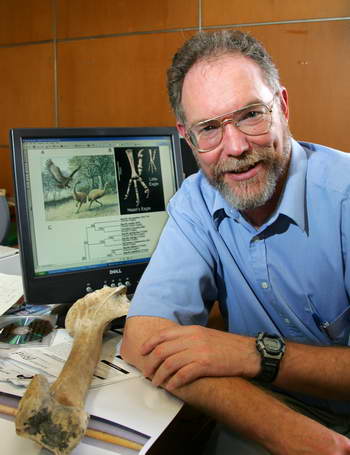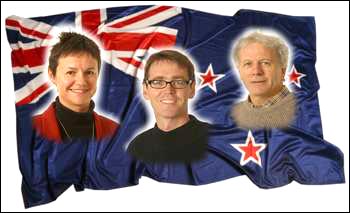Part 3 – Health In The Home Dorothy – 3/11/00
You can read the previous part in the Growing up in New Zealand 1925 – 1950 series here, or read the articles from the original Growing Up in New Zealand series.
Ideas on how to keep well and how to treat sickness have changed in many ways but a lot of the old practices and superstitions still have their supporters. Luckily few people still insist on their children, especially their sons, having cold baths every morning. The hated spoonful of codliver oil or other such remedies has given way to a tablet or capsule – a welcome improvement.
Standard remedies For minor illnesses there were standard remedies. Doses of castor oil were given for abdominal pain. Aspro was the remedy for headaches. Lane’s Emulsion or halibut oil capsules or malt (all revolting!) were to build up resistance to winter ailments. Some children were given a weekly dose of brimstone and treacle to purify the gut. For constipation common remedies were liquorice powder, Nyalls Figsen (Californian Syrup of Figs), cascara evacuant or senna pods.
Bonnington’s Irish Moss or Baxters Lung Preserver were administered for coughs and colds, and Throaties, Lixoids, lemon juice and honey, or eucalyptus on sugar or gargling with Condy’s Crystals were to help sore throats. Vicks Vaporub was rubbed on the chest for a chesty cough or Wonder Wool was worn under the clothes. Inhalations over a bowl of boiling water and some Friars Balsam were used to loosen phlegm and clear the nose and chest. Hardy’s Indigestion Powder or baking soda in hot water were for indigestion. Dinnefords Magnesia was used to bring up babies’ wind. Reckitts Blue Bags were rubbed on bee stings. Judy recalls the fizzing when peroxide was poured into her ear when she had earache.
There were no antibiotics until the late 40s.. Warm poultices made of antiphlogistine were placed on muscle strains and sprains, and to clear infected areas. Bandages were made out of old sheets or flour bags and washed and re-used. They were held in place with safety pins. Margaret recalls that she had to wear one of her father’s socks around her neck when she had swollen glands.
To clean our teeth some of us used Gibbs Dentifrice, a cake of pink cleaner in a round aluminium tin. Others used a mixture of salt and baking soda.
Common ailments Childhood ailments including measles, whooping cough, chicken pox, scarlet fever and even diphtheria were not uncommon. Infant vaccinations had not begun. Our doctors and parents believed that long convalescence was important. Catching mumps meant three weeks in bed. Judy A remembers being kept in bed for weeks after surgery for appendicitis and not being allowed to run or to ride a bike for a year.
Roger Ballantyne and Cyril mention having sulphur burnt in the room to prevent the infection spreading during the influenza epidemic at the end of World War 1. This practice continued and Judy remembers it being burnt on a shovel in the room or screwed in paper and carried smoking around the house.
We always hoped that we would not catch those infections that were found rather humiliating because they were considered the problems of ‘dirty children’ – ringworm, impetigo, worms and nits in the hair.
Special Fever Hospitals took patients for fevers including diphtheria and scarlet fever. Diphtheria tended to leave the patient with problems with the nervous system. For scarlet fever patients were kept in hospital for six weeks and only allowed to speak to visitors through the window for fear of the contagion.
Children who were admitted to the children’s ward in a general hospital were not allowed visitors, even their parents, except once a week on Sunday afternoon.
Seeing the doctor For anything more serious the doctor called at the house or a visit could be made to the doctor’s surgery (usually at his home). No appointment was needed. The doctor had set times for these surgery consultations. Often the doctor (almost always a man) would dispense the necessary medicine himself!
For a home visit the correct procedure was to have white towels ready and to be certain that the bathroom, especially the hand basin, was spotlessly clean.
General practitioners delivered most babies. There were a number of private nursing homes for maternity care. Mothers usually remained in the nursing home for about two weeks.
Hospitals and nursing homes smelt strongly of ether or chloroform which was used for anaesthetics, of disinfectant, or of floor polish.
Plunket Society Sir Truby King had established the Plunket Society which provided support for mothers and babies. When mother and baby returned home the Plunket nurse would call every week for six weeks and then mother and baby would visit the Plunket Rooms every month and the baby’s weight and progress would be recorded in a book. Plunket systems of that date have since been widely criticised, but the contact with the Plunket nurse gave women, especially first time mothers, a sense of security.
The branches of the Plunket Society had to raise funds to support the service and the membership of Plunket groups provided sociability for women, especially those who had moved to live in a different part of the country.
Karitane nurses Sir Truby King lived at Karitane near Dunedin so the name Karitane was given to the training system and the hospitals established for the care of mothers, babies and young children.
Karitane nurses were trained in the care of babies and pre-school children in an eighteen month course in the main centres. These nurses were employed in private homes by the well-to-do or worked in the neo-natal wards in hospitals, or in Karitane hospitals for mother and babies with health problems, especially difficulties with feeding.
The course included cooking healthy meals for children as in private casing a nurse might have sole charge of the children while the parents were away.
Polio epidemics Poliomyelitis epidemics occurred about every five or six years and the schools were closed for some weeks each time. I remember them at the end of 1936, early in 1943 and at the end of 1947. Travel from the affected areas was restricted and places where children would congregate, like cinemas or swimming baths, were closed.
James recalls being taken with his brother away from Dunedin to a relative’s farm in the country. The day after they drove there road blocks were set up and they would not have been allowed to travel. Once at the farm they were in quarantine until the epidemic was over.
Children affected often had a badly withered leg and had to wear a leg brace for life. Vaccinations for polio were introduced in the 50s.
School nurses Nurses employed by the Health Department visited schools and checked on children’s height and weight, sight, hearing and cleanliness, particularly checking their hair for signs of lice. Margaret didn’t know what the visits were for when she was first at school and was very envious of the children who got a note from the nurse to take home.
Public Health nurses visited the Maori communities and attended to babies and school children.
Children whose health was causing serious concern would be sent to Health Camps where they followed a regular routine of exercise and early nights and wholesome meals designed to send them home in a better state of health.
Dental nurses School dental nurses were introduced in the 1940s. Usually one dental clinic was shared amongst a number of neighbouring schools. In the earlier years dentists followed up with treatment for the children whose teeth needed attention. Later in the period fillings were done by the dental nurse using a pedal powered drill. The treatment was free. The children called the clinic ‘the murder house’.
Dentist visits Visiting the dentist was much more of an endurance test than it is today. Barbara T has vivid memories of visits to the dentist.
"I could smell the dentist’s rooms from the outside as the smell of gas wafted through everywhere. This was used for the pulling of teeth: a rubber ‘gag’ would be placed between your teeth so that you would not bite your tongue and to keep your jaws open while you were under the gas, and a rubber black ‘mask’ with an awful smell would be placed over your nose and mouth and gas pumped into you until you ‘drifted off’. There was a gauge on the machine which I suppose was adjusted as to age and height/weight of the patient, but it must have been a fairly risky business. Afterwards you ‘came to’ and most people were sick at that point. I had several teeth out this way and can still remember vividly the smell and the rubber mask.
"Then the dreaded drill, so rough and noisy that it reminded you of the street drill. It could often hit the gum or, worst of all, a nerve. That is one thing I wouldn’t want to return from the past."
Local anaesthetics were the alternative to gas for some dentistry, but the injection of these anaesthetics was really painful.
Teeth extraction very common Many people had all their teeth removed and were fitted with dentures when they were quite young. It was regarded as an economy measure as it saved paying for visits to the dentist. Many men in the armed forces had their teeth removed as they were then fitted with a denture without cost.
Go on to part four!


